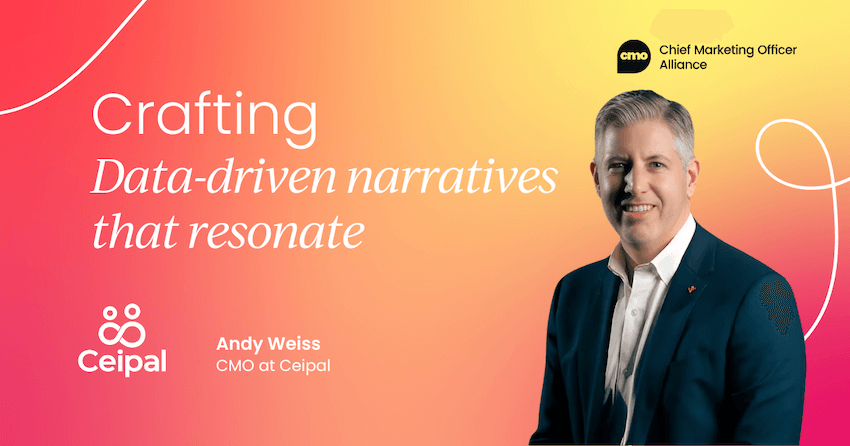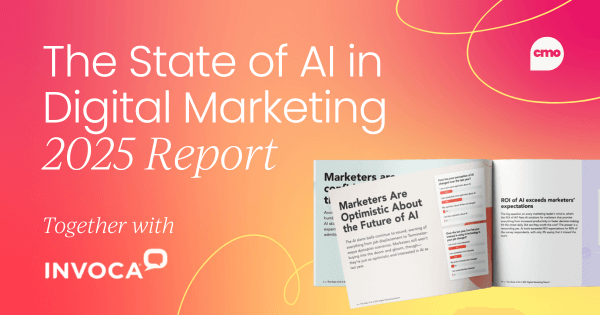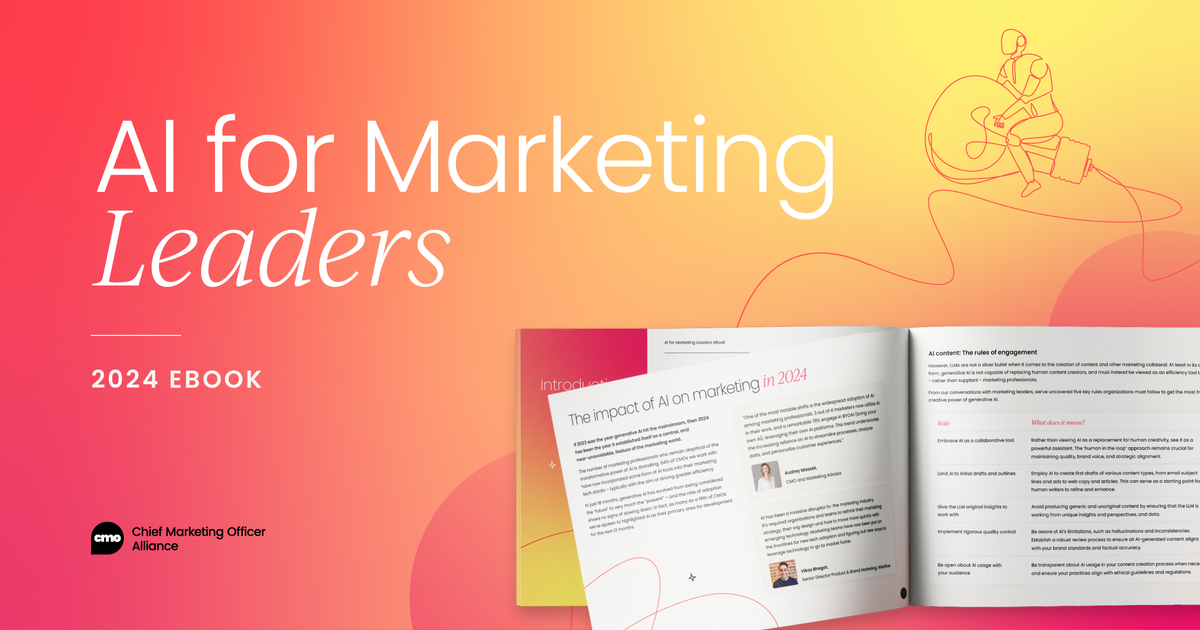Let's be real – as a startup or small business entering the content marketing game, you're facing an uphill battle.
The major industry players with their deep pockets and established domain authority have all-terrain vehicles and oxygen tanks to drive straight to the top of the mountain, while you're stuck on foot hauling a 500-pound bag trying to reach the same summit.
It's not a level playing field, but that doesn't mean you can't find ways to even it out.
Prefer to listen? Check out James' appearance on the CMO Convo podcast 👇
The rich get richer in SEO
The harsh reality is that a site's domain authority (DA) and its existing rankings for certain keywords heavily influence whether a new piece of content will be able to rank.
As a new site without any history, your domain authority and domain rating (DR) metrics will likely be below 30 out of 100. And no matter how exceptional and optimized your content might be, you simply won't have any realistic chance of ranking for competitive search terms with decent monthly volumes.
Those older and more established sites hosting that same piece of content you worked so hard on, will have a major advantage.
If their domain rate is 75 or higher and they already drive significant traffic from other top-ranking pages, that fresh content will be primed to rank way higher and far more easily than yours.

How to level the SEO playing field
For some businesses and industries, content marketing simply isn't a viable strategy worth pursuing. Occasionally I have to tell companies, "Those opportunities just aren't there in your space." That doesn't mean you can't succeed, but investing significantly in inbound marketing and content creation may not be worth it.
However, if inbound content fits your business, if you want to compete, you can't create content flippantly and expect results. You need to be more conscientious and intentional – know exactly why you're producing each piece, how it will help navigate readers further into your funnel, and the specific primary and secondary keywords you're targeting.
Follow all the established content marketing best practices to a T.
Once you've got a solid strategy and content plan in place, I recommend launching with three distinct content categories or clusters, each one containing 3-5 comprehensive pillar pages. Then you should surround these pages with 15-20 supporting articles.
Get that initial core content foundation published, then stay vigilant – use SEO tools like Ahrefs and SEMrush to closely monitor each piece's organic performance.
When a URL's success is vital to your goals and you've invested significant budget into its creation, you need to keep meticulous tabs on where it's ranking, when its rankings plateau, and when it ultimately finishes that journey toward the top.
The moment you notice a previously rising URL start to flatline or decline its organic rankings, it's time to take action. Get in there swiftly and update it with fresh content, add internal links, acquire new backlinks – whatever it takes to revitalize its momentum.
Don't create any piece of content haphazardly or without a clear, calculated purpose behind it. You need to be intensely aware of not just the production process, but the entire content lifecycle from conception to optimization over time.
Adopt a mindset of continuous improvement.
When to optimize your best content
The idea of "evergreen" content that’ll perpetually drive results with zero upkeep is largely a myth these days, especially in spaces like SaaS and e-commerce where info gets obsolete rapidly.
We have a rule that any statistics or data referenced in our content can be no older than 18 months.

If a writer tries citing a stat from 2020 or earlier, we have to send that content back to have it updated with fresher, more recent info. This is crucial for staying in Google's good graces, as they've gotten savvier about identifying stale, outdated content – and they prefer ranking newer and more timely pages.
So when should you prioritize going back to update and re-optimize your content?
There are two key times to optimize a piece of content:
- When a previously climbing URL plateaus or starts declining its rankings, slipping out of the top 7 positions and into what I call the "elevens" between spots 8-30. These are the pieces just outside the top real estate delivering outsize traffic, and they should be your first optimization priorities.
- When significant changes, developments, or new information emerge in your specific industry that makes portions of your existing content inaccurate or outdated.
At an absolute minimum, plan to fully re-optimize and refresh all your content annually, even if those two situations above don't apply. Letting content go stale is a recipe for declining rankings over time.
Starting a new content campaign
So what happens if you launch a new content piece that feels extremely intentional and well-targeted towards a relevant keyword opportunity... and it just doesn't gain any traction?
First piece of advice: Don't simply abandon it and move on. Sometimes a content piece just needs more time to marinate and pick up organic steam, so wait it out for a while before making any rash decisions.
If you've given it a few months and it genuinely seems to be a total dud with no signs of life, you have two options:
- If your underperforming URL has managed to acquire even just a few backlinks here and there, leave the content as-is and do a 301 redirect, flowing that link equity toward another URL on a similar topic. Specifically, one that's already close to breaking through into the top rankings. Consolidating that link juice could be the final nudge that helps the second piece start driving serious organic traffic.
- Completely rewrite the content from scratch on that same URL. Don't worry, the URL itself holds all the value, not the actual words.
Brian Dean at Backlinko is a pro at this content refresh strategy. He may have just 50-100 URLs on his entire site, but he rewrites and re-optimizes those same pages constantly to stay fresh. It’s allowed him to build an authoritative library of work while staying hyper-relevant and consistent with search trends.
The key is being ultra-intentional about targeting high-value keyword opportunities from the start. If you missed the mark there, cut bait and refocus your efforts.

Quality vs. quantity in content
A decade ago during content marketing's initial breakout, the conventional wisdom was that the key to success was all about volume – just push out content constantly, with quantity taking precedence over quality. Those days are long gone.
Today, I can't even tell you with full confidence whether a specific article will rank for its target keyword. There are way too many shifting variables and ranking factors and, the truth is, that you simply have to create content intentionally. Target what you've identified as a viable keyword opportunity, publish it, and then see what manages to stick.
If it doesn't gain traction at all, that doesn't necessarily mean it was low-quality – it just didn't stick with those "SEO gods" at that time.
The smart approach is to produce a high volume of quality content, but then double down and invest deeply in optimizing anything that shows ranking potential in that 8-30 range. Why waste resources over-optimizing a piece that's stuck in the abyss?
Find those winning opportunities and pile the optimization efforts there.
Final thoughts
As a startup or small player, you're fighting an inherent disadvantage when it comes to content marketing and SEO. The big domains have spent years accumulating domain authority that’ll help them rank more easily.
However, that doesn't mean you're doomed. If you’re extremely intentional about targeting opportunities strategically, monitoring performance religiously, and refreshing/optimizing your content as needed, you can overcome that disadvantage.
Focus on quality over quantity by producing targeted content campaigns. Let those campaigns bake for a while, analyze what's working and what's not, and then double down on winners by updating and optimizing those pages until they crack the top rankings.
This continuous cycle of publishing, analyzing, and optimizing isn't easy, but it's necessary. Those willing to put in the work can still find SEO success – you just have to get tactical to level that playing field.
Get your copy of the AI for Marketing Leaders ebook for insights from top CMOs and industry experts who are pioneering AI adoption in the marketing world.




 Follow us on LinkedIn
Follow us on LinkedIn







